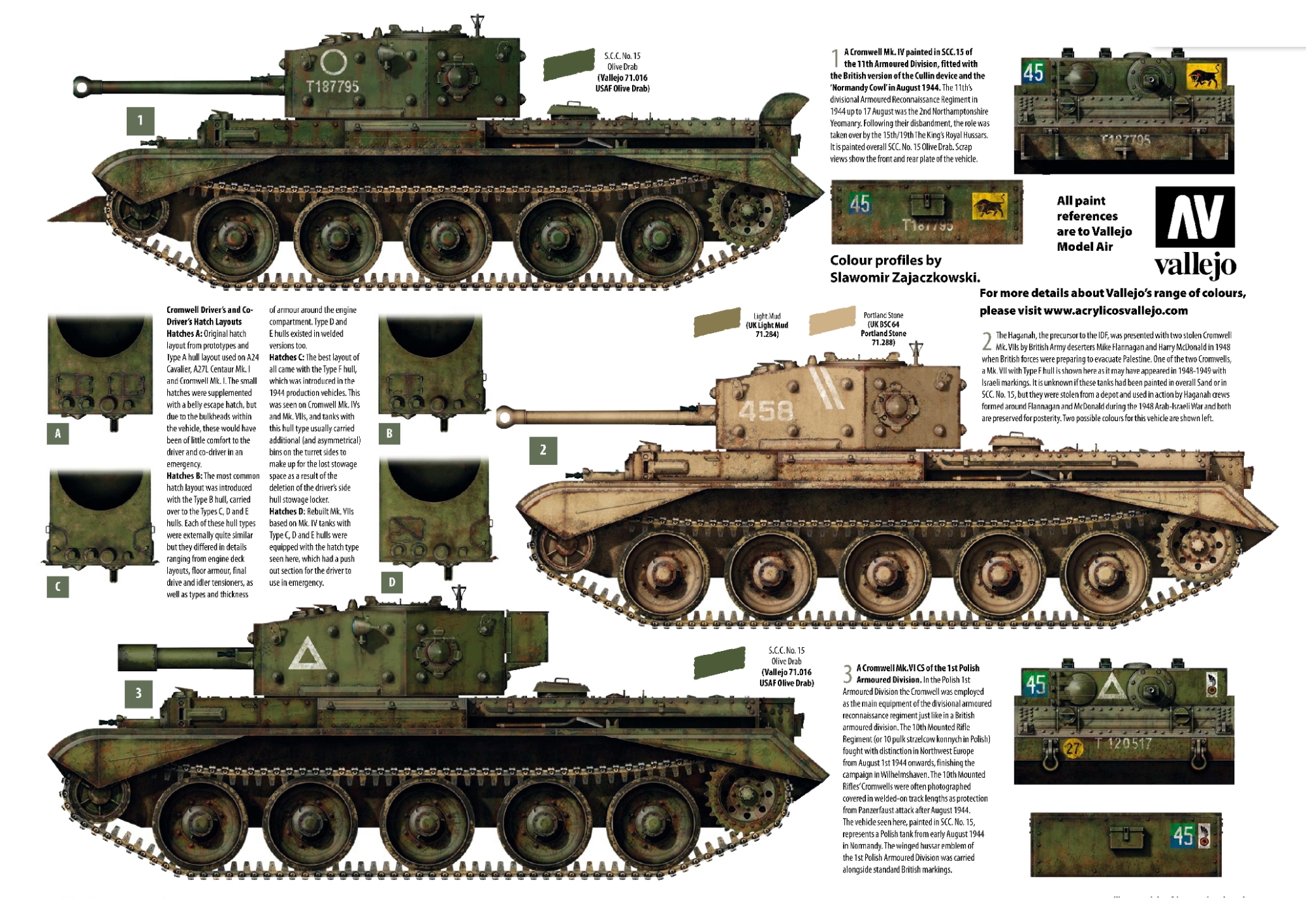
Initially known as Cromwell III, the Meteor-engined version of the A27 design was designated A27M (M: Meteor engine). The Meteor engine as adapted from the Merlin for tank use had about 80 % of its component parts identical to the aircraft engine, thus greatly facilitating production for tanks. Rolls-Royce converted a batch of Merlins for use in tanks, and during 1941 two Crusader tanks had Meteor engines installed in place of their Liberty power plants for exhaustive test running. This enabled positioning of auxiliary components, wear and tear, oil consumption, and so on to be determined at an early date while design work on the A27 itself proceeded. Birmingham Carriage & Wagon delivered the first mild steel prototype to the Army for trials on March 1, 1942, actually ahead of the Centaur pilot model. Two more pilot models were delivered by the end of 1942, and teething troubles on tests proved relatively minor-mainly detail points concerned with clutch, gears, and cooling. The idea of using the powerful Meteor engine was handsomely vindicated by results, and ample power was available for any forseen developments of the A27 type. Cromwell production started in January 1943, by which time Leyland had become the design and production “parents” for the entire A27 series. This embraced all subcontractors for component parts as well as plants building Cromwells.
Meanwhile, War Office policy with regards to tank armament had changed considerably since the “heavy cruiser” requirement resulting in the A24/A27 series had been formulated. Fighting in the Western Desert, coupled by the decisive appearance of the American-built M3 and M4 Medium tanks in that theatre led to a requirement for a gun with “dual-purpose” capability-able to fire HE or AP shot-as fitted in the very successful M3 and M4 mediums. Work on a British designed version of the 75mm gun virtually a bored-out development of the British 6pdr able to fire American ammunition, was put in hand in December 1942 and Cromwells from Mk IV onward were produced with this weapon in place of the 6pdr. The first vehicles so equipped were delivered in November 1943, but there were many initial defects in this gun, including unsatisfactory semi-automatic cams in the breech, which were not entirely put right until May 1944.
The Cromwell was numerically the most important British-built cruiser tank of World War II, forming the main equipment of British armoured divisions in 1944-45 together with the American-built M4 Sherman. However, even with a 75mm gun it was still, by 1944 standards, inferior to contemporary German tanks like the Panther and late-model PzKw IVs. With its Meteor engine it was the fastest and most powerful of British tank designs until that period, but physical limitations (mainly the narrowness of the hull) prevented its being upgunned further and considerable redesign was necessary to turn it into a vehicle capable of carrying the very desirable 17pdr gun armament -see the Challenger and Comet for further details.
All the A24/A27 series were structurally similar, with a hull and turret of simple box shape and composite construction-an inner skin with an outer layer of armour bolted on. Driver and co-driver/hull machine gunner sat in the forward compartment, and the turret crew consisted of the commander, gunner and loader who was also the radio operator. Tracks were manganese with centre guides, and the engine and transmission were at the rear. Numerous detail modifications were incorporated during the Cromwell’s production run, which ended in 1945. These are noted below. Most important innovation was the introduction of all-welded construction in place of rivetting on later models, thus further simplifying mass-production.